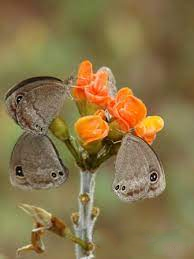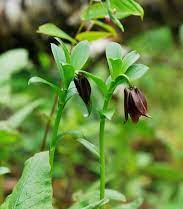Important Facts For Prelims
Three Himalayan Medicinal Plants Enter IUCN Red List
- 10 Dec 2022
- 4 min read
Why in News?
Three medicinal plant species (Meizotropis pellita, Fritillaria cirrhosa, Dactylorhiza hatagirea) found in the Himalayas have been added to the IUCN Red List of Threatened Species following a recent assessment.
- This assessment in the Himalayan region shows deforestation, habitat loss, forest fires, illegal trade and climate change pose a serious threat to the species. The fresh data is expected to aid conservation efforts in the region.
What are the Key Highlights of these Species?
- Meizotropis pellita:
- About:
- It is commonly known as Patwa, is a perennial shrub with a restricted distribution that is endemic to Uttarakhand.
- Enlisting in IUCN:
- The study stated that the species is listed as ‘critically endangered’ based on its limited area of occupancy (less than 10 sq. km).
- The species is threatened by deforestation, habitat fragmentation and forest fires.
- Significance:
- The essential oil extracted from the leaves of the species possesses strong antioxidants and can be a promising natural substitute for synthetic antioxidants in pharmaceutical industries.
- Fritillaria cirrhosa:
- About:
- It is commonly known as Himalayan fritillary, is a perennial bulbous herb.
- Enlisting in IUCN:
- Considering the rate of decline, long generation length, poor germination potential, high trade value, extensive harvesting pressure and illegal trade, the species is listed as ‘vulnerable’.
- Significance:
- In China, the species is used for the treatment of bronchial disorders and pneumonia. The plant is also a strong cough suppressant and a source of expectorant drugs in traditional Chinese medicine.
- Dactylorhiza hatagirea:
- About:
- It is commonly known as Salampanja, is a perennial tuberous species endemic to the Hindu Kush and Himalayan ranges of Afghanistan, Bhutan, China, India, Nepal, and Pakistan.
- Enlisting in IUCN:
- It is threatened by habitat loss, livestock grazing, deforestation, and climate change, the species is listed as ‘endangered’.
- Significance:
- It is extensively used in Ayurveda, Siddha, Unani and other alternative systems of medicine to cure dysentery, gastritis, chronic fever, cough and stomach aches.
UPSC Civil Services Examination Previous Year Question (PYQ)
Q. With reference to the International Union for Conservation of Nature and Natural Resources (IUCN) and the Convention on International Trade in Endangered Species of Wild Fauna and Flora (CITES), which of the following statements is/are correct? (2015)
- IUCN is an organ of the United Nations and CITES is an international agreement between governments.
- IUCN runs thousands of field projects around the world to better manage natural environments.
- CITES is legally binding on the States that have joined it, but this Convention does not take the place of national laws.
Select the correct answer using the code given below:
(a) 1 only
(b) 2 and 3 only
(c) 1 and 3 only
(d) 1, 2 and 3
Ans: (b)







